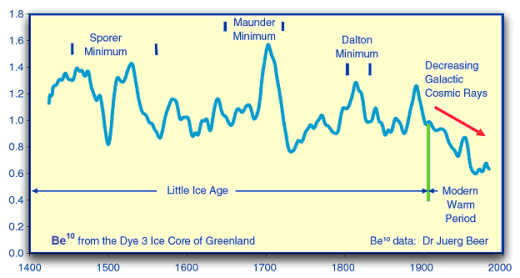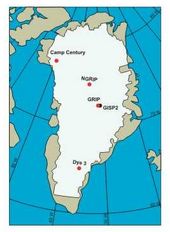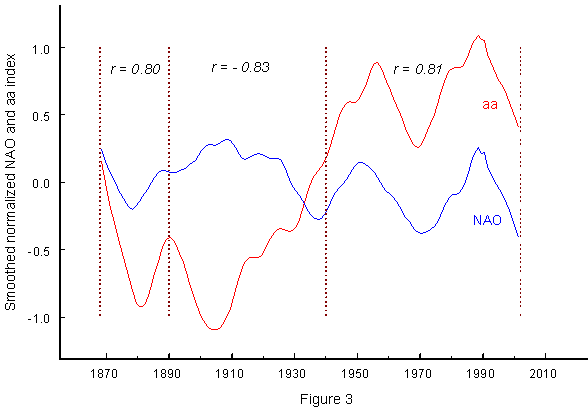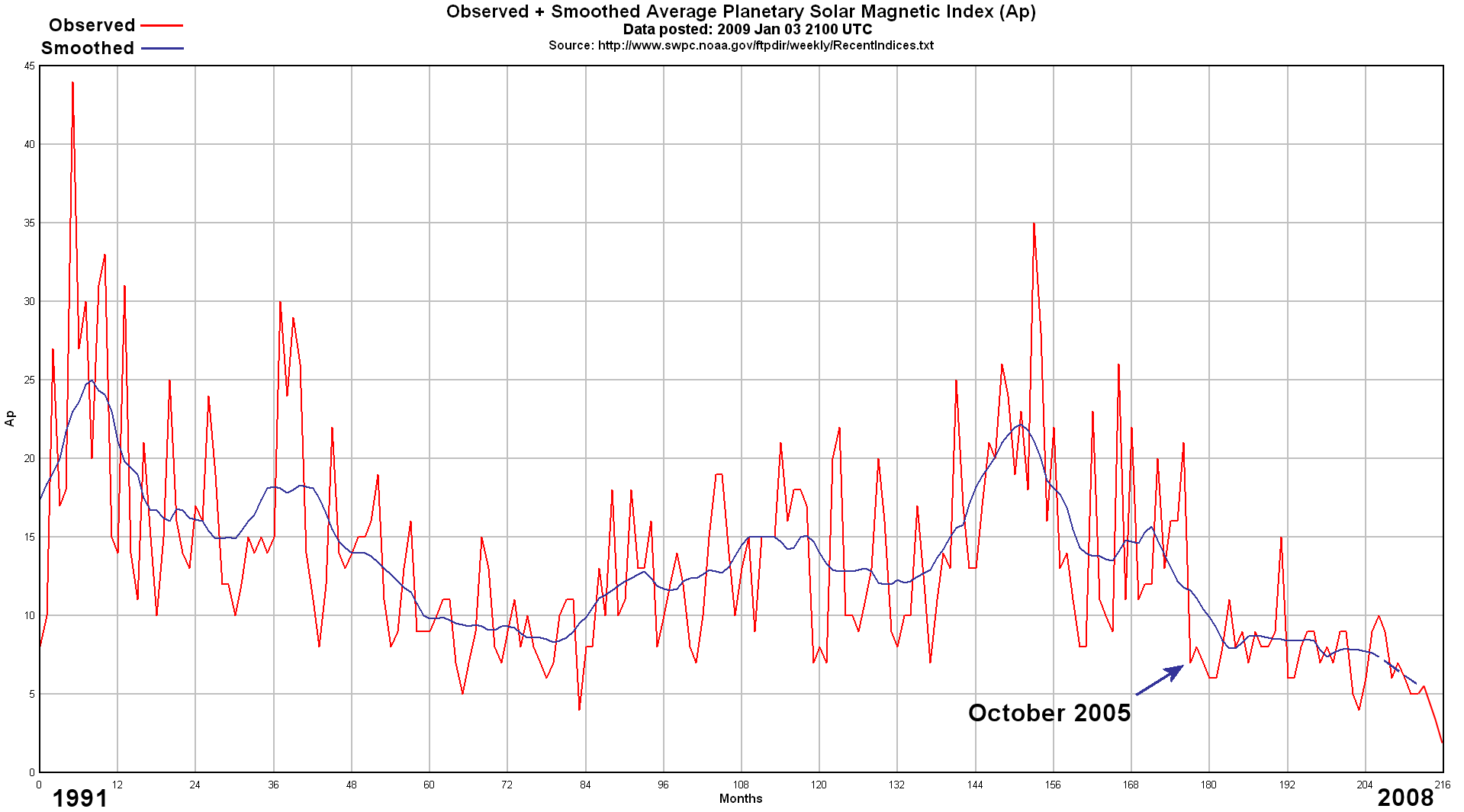Beryllium-10 is an isotope that is a proxy for the sun's activity. Be10 is produced in the atmosphere by cosmic ray collisions with atoms of oxygen and nitrogen. Beryllium 10 concentrations are linked to cosmic ray intensity which can be a proxy for solar strength.
One way to capture earth's record of that proxy data is to drill deep ice cores. Greenland, due to having a large and relatively stable deep ice sheet is often the target for drilling ice cores.
Isotopic analysis of the ice in the core can be linked to temperature and global sea level variations. Analysis of the air contained in bubbles in the ice can reveal the palaeocomposition of the atmosphere, in particular CO2 variations. Volcanic eruptions leave identifiable ash layers.
While it sounds simple to analyze, there are issues of ice compression, flow, and other factors that must be taken into consideration when doing reconstructions from such data. I attended a talk at ICCC 09 that showed one of the ice core operations had procedures that left significant contamination issues for CO2. But since Beryllium is rather rare, it doesn't seem to have the same contamination issues attached. - Anthony Watts
Be-10 and Climate
A couple of years ago on Climate Audit, I undertook to do battle with Dr Svalgaard's invariate Sun using Dye 3 Be10 data. And so it has come to pass. Plotted up and annotated, the Dye 3 data shows the strong relationship between solar activity and climate. Instead of wading through hundreds of papers for evidence of the Sun's influence on terrestrial climate, all you have to do is look at this graph.

The end of the Little Ice Age corresponded with a dramatic decrease in the rate of production of Be10, due to fewer galactic cosmic rays getting into the inner planets of the solar system. Fewer galactic cosmic rays got into the inner planets because the solar wind got stronger. The solar wind got stronger because the Sun's magnetic field got stronger, as measured by the aa Index from 1868.
Thus the recent fall of aa Index and Ap Index to lows never seen before in living memory is of considerable interest. This reminds me of a line out of Aliens: "Stay frosty people!" Well, we won't have any choice - it will get frosty.






Reader Comments
to our Newsletter